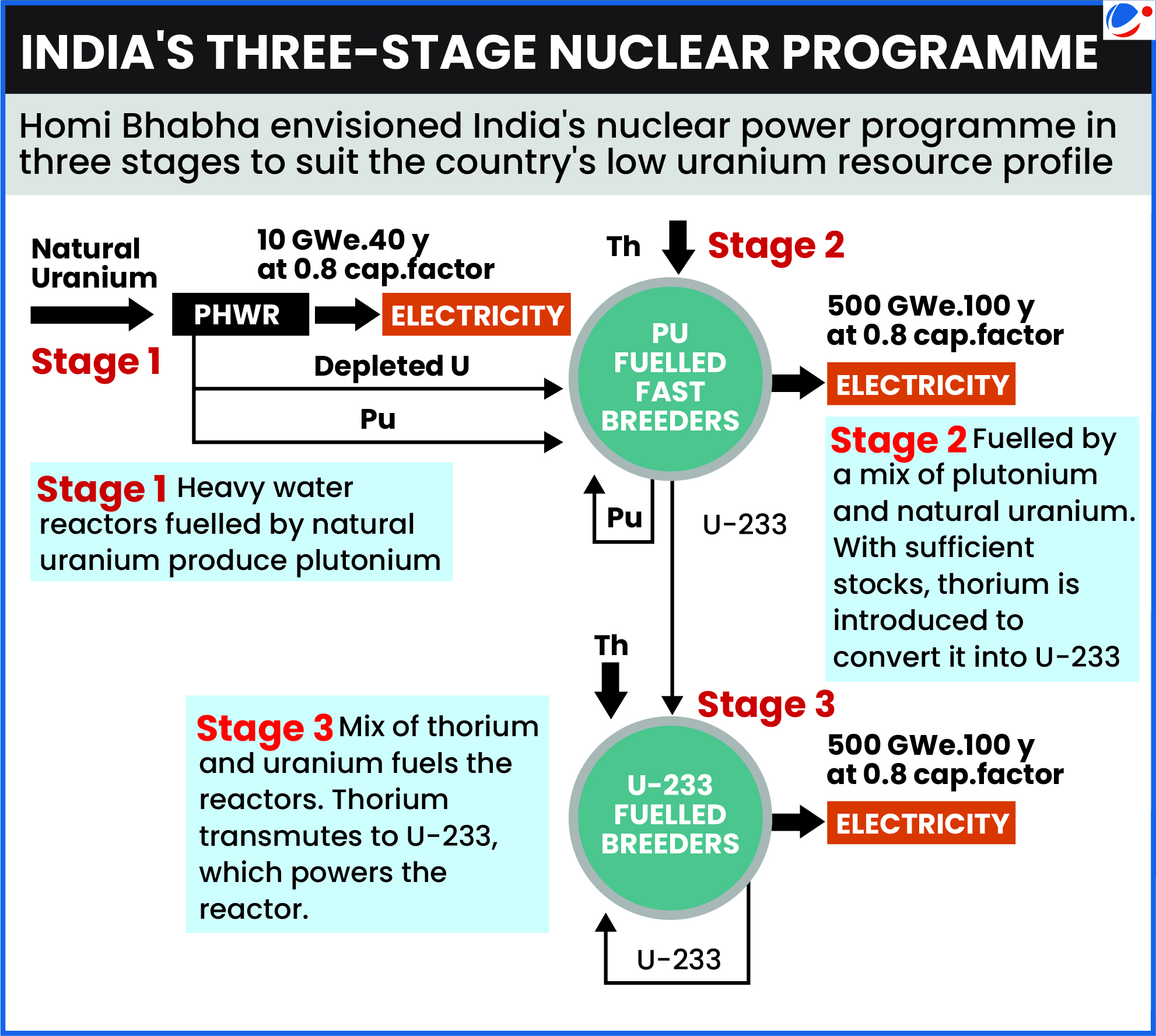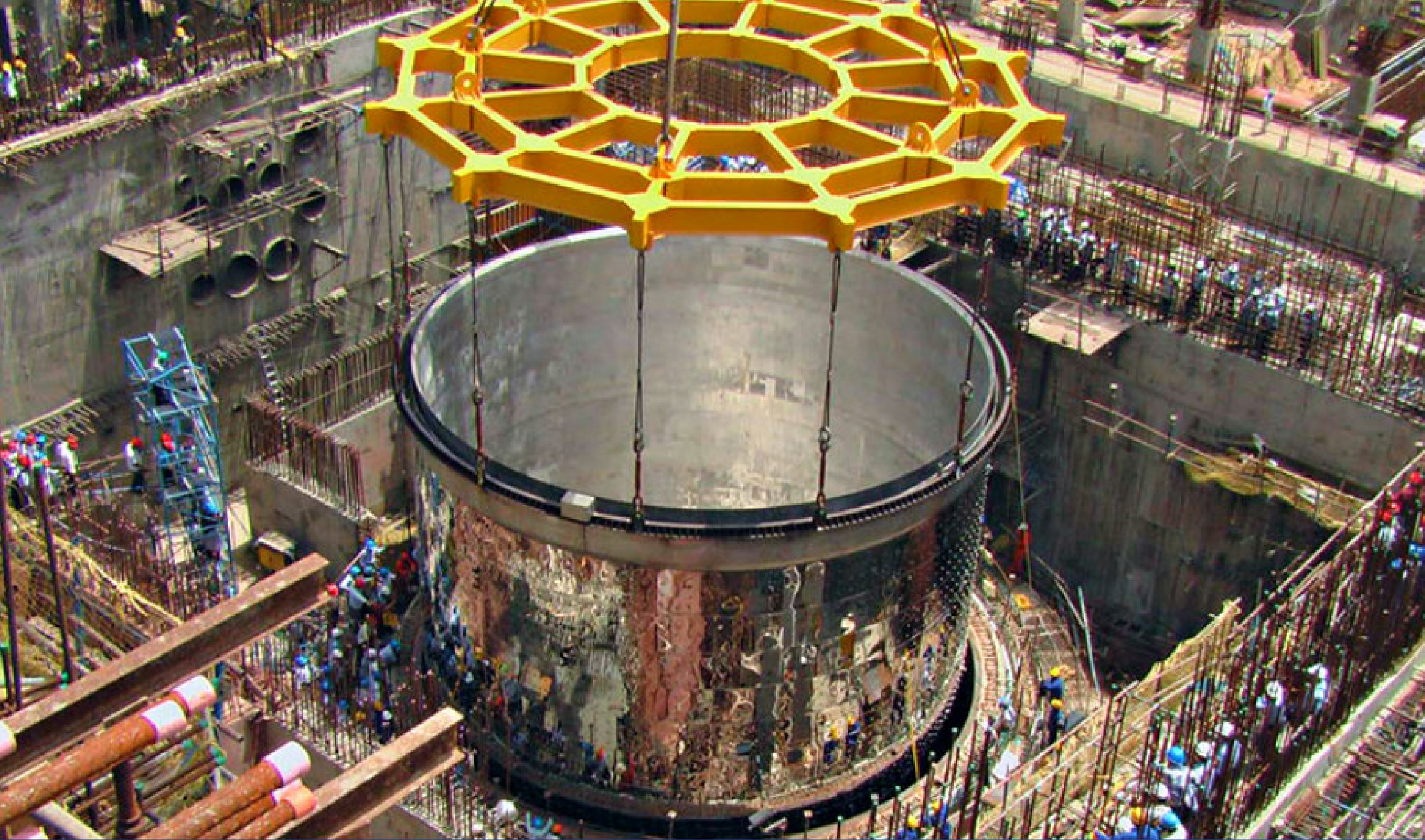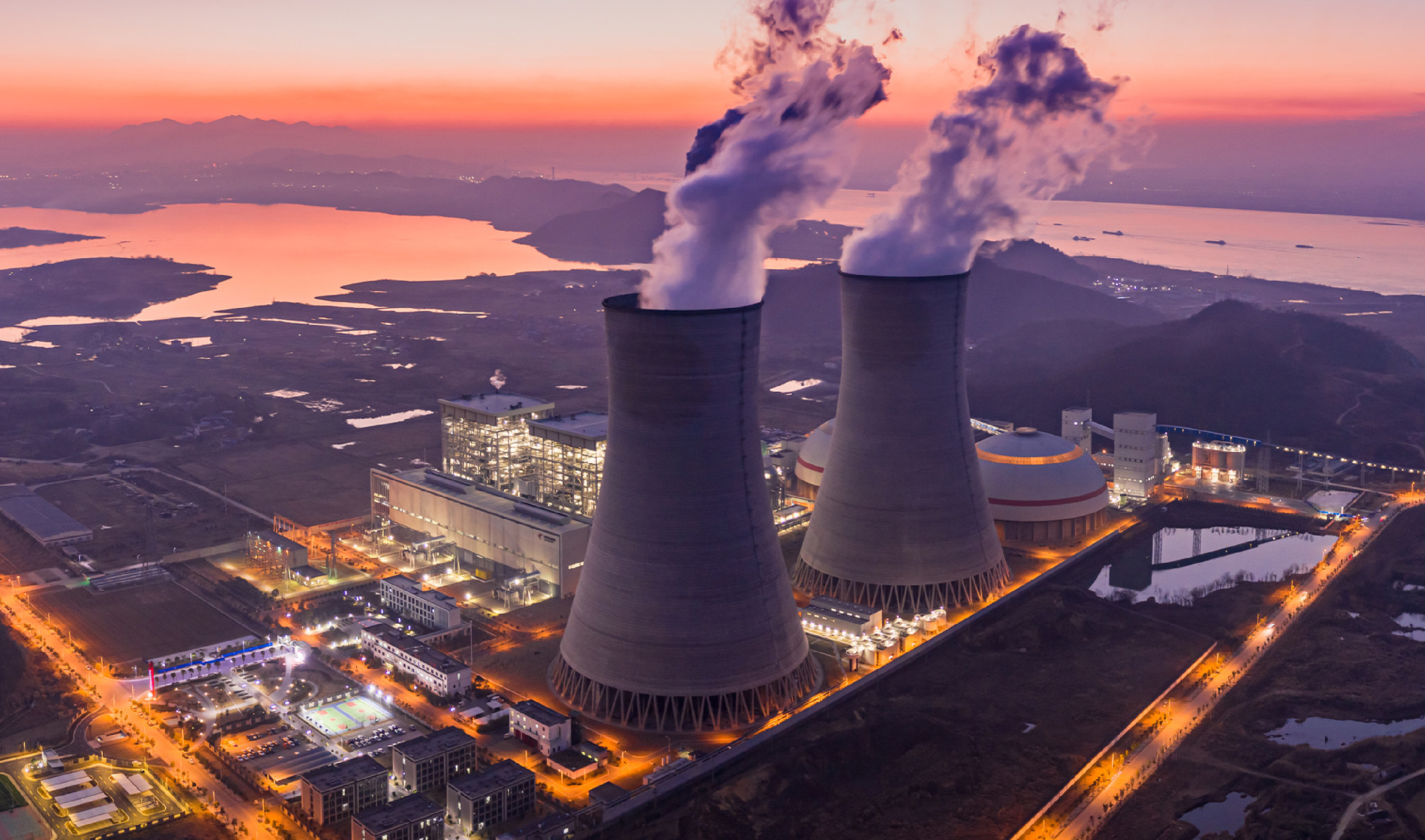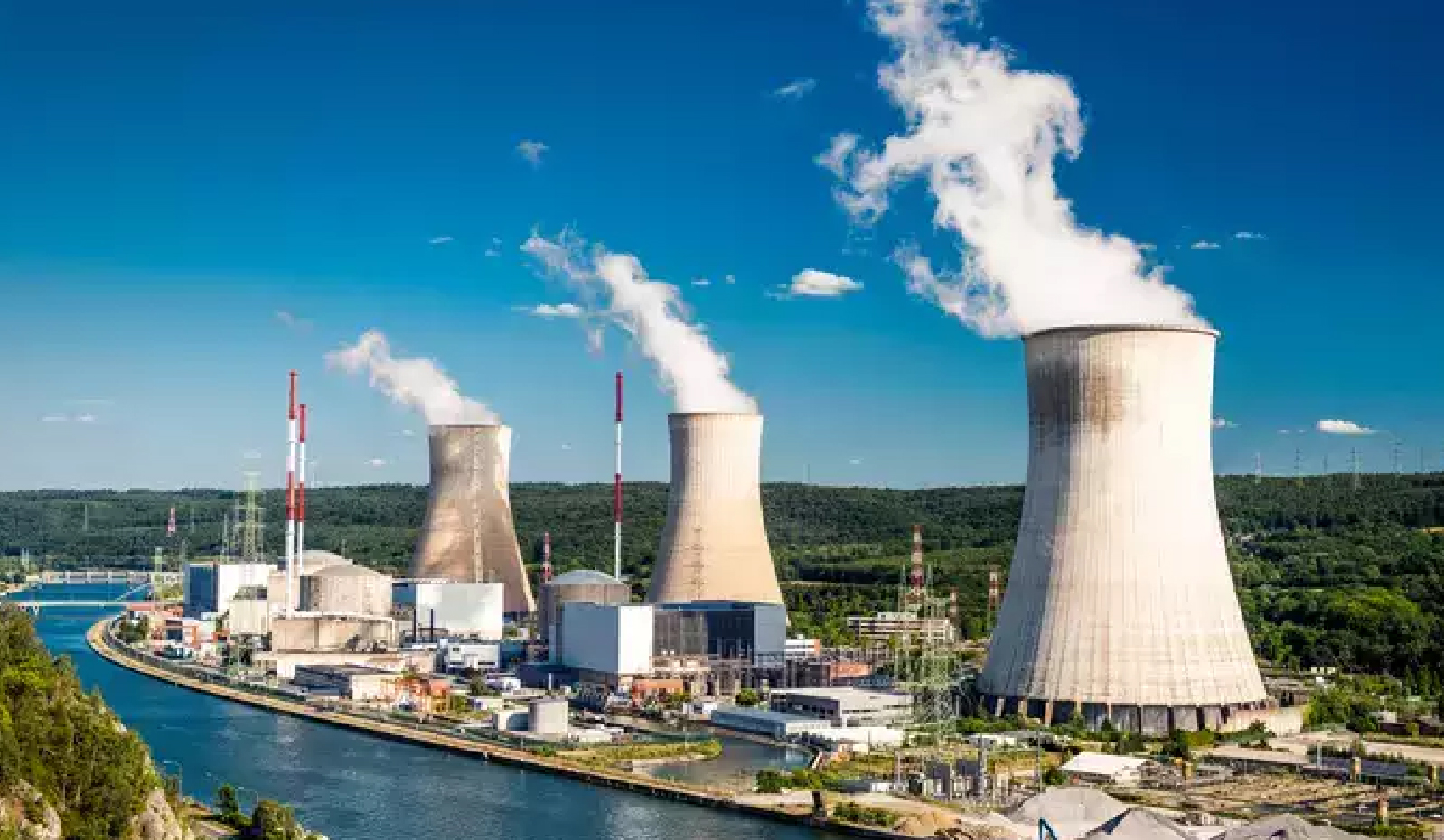
KAPP-4 (in Gujarat) is a Pressurised Heavy Water Reactor (PHWR) that use natural uranium as fuel and heavy water as moderator.
- In 2023, it had achieved its first criticality (when each fission event releases a sufficient number of neutrons to sustain an ongoing series of reactions).
- 700MWe PHWR unit addresses the issue of excess thermal margins, and 14 more such unit are expected to commence operations progressively by 2031-32.
- ‘Thermal margin’ refers to the extent to which the operating temperature of the reactor is below its maximum operating temperature.
Enhanced safety features incorporated in 700MWe unit
- Thin-walled pressure tubes: It can lower the severity of an accidental rupture of the pressure boundary.
- Passive Decay Heat Removal System: It can remove decay heat from the reactor core without requiring any operator actions.
- It is on lines of similar technology adopted for Generation III+ plants to negate the possibility of Fukushima type accidents (happened in Japan in 2011).
- Containment: Steel-lined containment to reduce any leakages, and a containment spray system to reduce the containment pressure in case of a loss of coolant accident.






